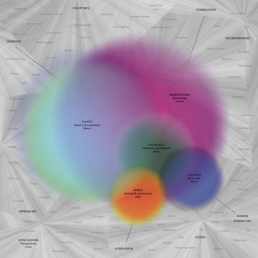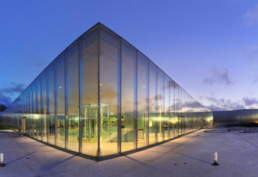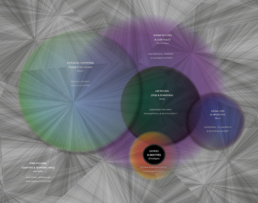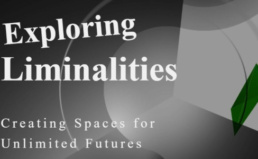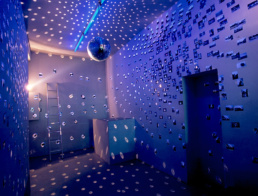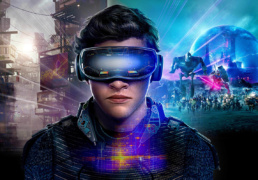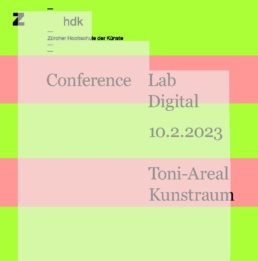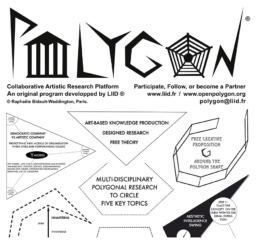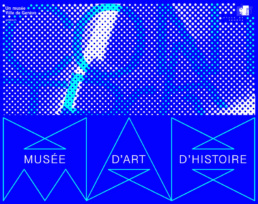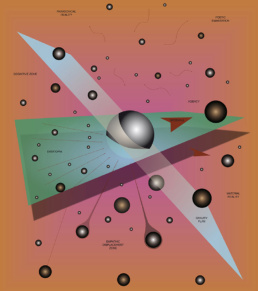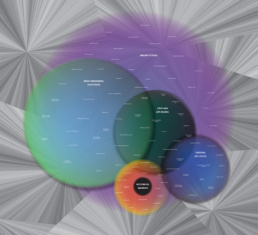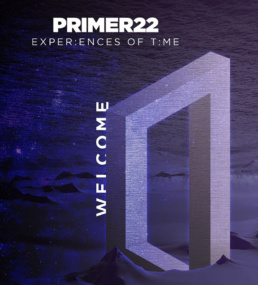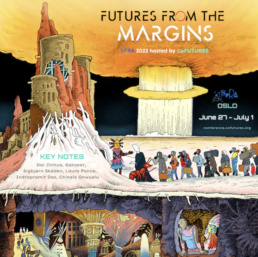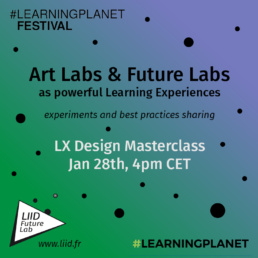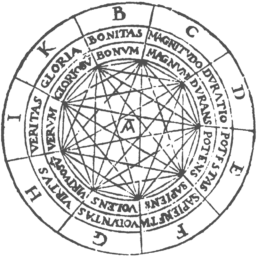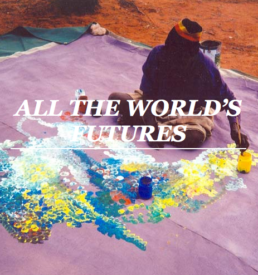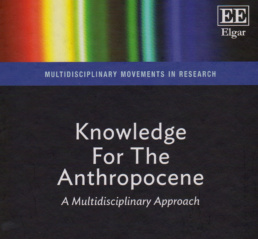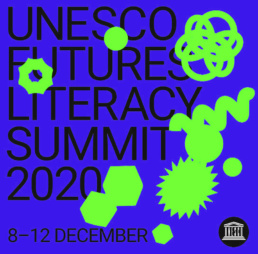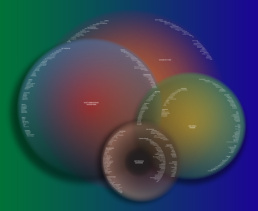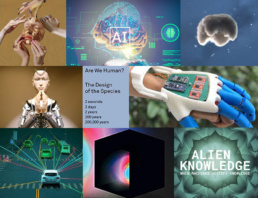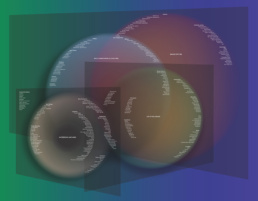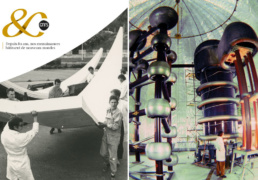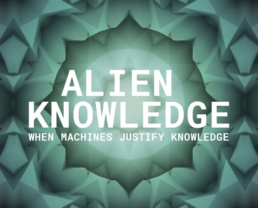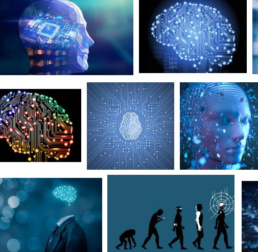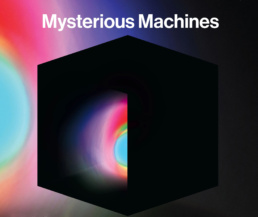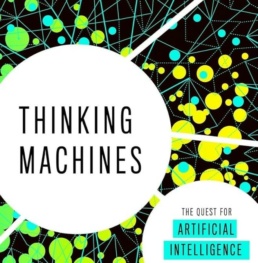Future Worlds, the prospect of an anthropological and epistemological refoundation ⋅
Bigger Picture
Anthropocene, biodiversity, geoengineering, AI, post-truth, multiverse, post-colonial pluriversalism …. If the art of Foresight allows us to explore many futures, the current paradigm shift of an unprecedented scale, calls for new approaches capable of addressing these dizzying horizons.
-
How can we understand the major transitions underway and imagine meaningful new future worlds, when all our anthropological and epistemological foundations are being called into question? How to design new aspirational future worlds and ‘alien cosmologies’, to renew our visions of the world and of the future?
TAC Future Lab is a transdisciplinary research platform dedicated to these large-scale future challenges, experimenting methodologies and formats borrowed as much from Foresight as from research in Art and Design, pedagogy, philosophy and non-western discursive traditions.
-
These investigations can then support research on more specific issues, such as the future of AGI, Oceans, Science, or Museums - to name the few we have worked on in recent years.
Bigger Picture
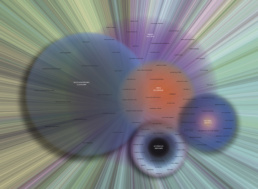
Anthropocene, biodiversity, geoengineering, AI, post-truth, multiverse, post-colonial pluriversalism …. If the art of Foresight allows us to explore many futures, the current paradigm shift of an unprecedented scale, calls for new approaches capable of addressing these dizzying horizons.
- How can we understand the major transitions underway and imagine meaningful new future worlds, when all our anthropological and epistemological foundations are being called into question? How to design new aspirational future worlds and ‘alien cosmologies’, to renew our visions of the world and of the future?
TAC Future Lab is a transdisciplinary research platform dedicated to these large-scale future challenges, experimenting methodologies and formats borrowed as much from Foresight as from research in Art and Design, pedagogy, philosophy and non-western discursive traditions.
-
These investigations can then support research on more specific issues, such as the future of AGI, Oceans, Science, or Museums - to name the few we have worked on in recent years.
Research Axes & Journal •
Exploring the future begins with looking at the present (and the past) to capture the transformations (trends) and transitions underway and apprehend their implications, prior to any future projection.
The three major current transitions – environmental (Anthropocene, energy, resilience), digital (technologies, AI, post-truth, multiverse, etc.) and demographic (generational turnover, post-colonial paradigm) – impact every aspect of life, in both their material and immaterial dimensions: uses, organizations, society, territories, ecosystems, human and no-human planetary equations, as well as representations, imaginaries, values and meaning.
The ontological uncertainty (what we call the alien factor) they sow invites us to reconsider the anthropological and epistemological foundations of the human condition, and to imagine new cosmologies as possible visions of the world and of the future. TAC (Toward Alien Cosmologies) emerged in 2017 from initial research on the future of/with AI, that revealed this unprecedented spectrum of critical future challenges.
Whether through publications, conferences, interactive masterclasses, exhibitions, one-off workshops, or more in-depth collaborations, we produce insights into the contemporary world’s evolutions and the plurality of futures, always mixing approaches, angles and perspectives (what we call polygonal research, as it is multifaceted).
The horizon of future worlds, impossible to embrace and rationalize as a whole, is presented as an open and fluid panorama (futurescape), moving and evolving along trends, transitions and tensions to be highlighted. Image-based research (online curation and AI generation) also supports the construction of a sensitive relationship to the future, and possible aesthetic and conceptual breakthroughs in future-thinking.
Experiences related to this axis:
2025 : Toward Alien Cosmologies, prospective of an epistemological refoundation, Biennale Nova_XX catalog, Paris.
2024: Panorama of environmental, digital and demographic transitions, keynote, Louvre Lens Valley, Lens.
2022: Panorama of transitions and museums future challenges, masterclass, Museum of Art and History, Geneva.
2022: Exploring Time Multi-dimensionality via an Artistic and Polygonal Research Approach, PRIMER Global Conference, online.
2021: Designing Post-Human Futures, in Knowledge for the Anthropocene, E. Elgar press, UK.
2021: Towards Alien Cosmologies, prospective of an anthropological refoundation, installation, HiFlow, Geneva.
2020: Towards Alien Cosmologies, prospective topology of an anthropological refoundation, FuturHebdo Anthologies Prospective magazine #4, Paris.
2020: Toward Alien Cosmologies, AI and the Human Frontier, Muzeum Susch Magazine #1, Switzerland.
2018-19: Our Knowledge Builds New Worlds, CNRS 80yrs anniversary, Paris.
2017: Toward Alien Cosmologies, Chapter #8 “New frontier of sciences and technologies”, Cahier FUTUR(S), Peclers, Paris.
The future, and even more so at this scale, is a research object that is at once hyper complex, versatile, plural and speculative. The discipline of Foresight and Future studies at large is currently evolving along the aforementioned paradigm shift.
Taking part in that discussion, whether to structure our analyses (axis 1) or to guide collective explorations (see our Collaborations), we seek to design and experiment innovative, if not disruptive, methodologies. This endeavor includes a reconceptualization of critical future research by introducing notions such as polygonal research, future cosmologies, futurescapes, the alien factor, and so on.
It also includes the design of exploratory devices, tools and formats (e.g. diagrams such as the TAC Future Canvas, installation, workshop kit, etc.), to facilitate the cognitive and collaborative experience of future research. Clarity, openness, plurality, inclusivity, empowerment, impact, sustainability, efficiency, purposefulness, are some of our design principles. For that matter, we continuously search for inspiration and learnings from a broad spectrum (open polygon) of disciplines: Foresight, Trend analysis, Design, Transition studies, Science Fiction, World-building, Arts, Ethnography, Post-humanist Philosophy, Pedagogy, and so on.
Our tools are conceived as vectors of trans-disciplinarity and interculturality.
Each experience is an opportunity to adjust and sharpen our tools, to design and to experiment ad hoc methodological prototypes, taking in consideration the context, the specific future challenges addressed, the profiles of the participants and the research purpose. See all our collaboration modules and ecosystems.
Experiences related to this axis:
2025 : Toward Alien Cosmologies, prospective of an epistemological refoundation, Biennale Nova_XX catalog, Paris.
2024: TAC Future Lab, Opening Innovative Epistemological and Pedagogic Horizons, in Limit/NoLimit, Art & Design Research Conference, ENSCI-ENS Saclay, Paris.
2024: Futurescape Lab, pedagogic experiment and exhibition, ISC Campus, Paris.
2023: Contributions and Limits of SF to Responsible Innovation: The Case of Ready Player One analyzed with the 5F grid (TAC Future Canvas), Technology & Innovation Review, Vol. 23-8.
2023: TAC, a Future World-building Approach, 25th World Future Studies Federation World Conference, Ecole des Ponts, Paris.
2022: The Future as a Moving Panorama: Introducing a Futurescaping Canvas to Support Pedagogy, Inclusion and Complexity Management, Futures From the Margins, Science-Fiction Research Association International Conference, University of Oslo, Norway.
2022: TAC, future visualization experiments, in Exploring Next, Association of Professional Futurists Global Conference, online.
2022: New Philosophies, New Foresight Perspectives, webinar Ethics and Philosophy of Futures Open Discussion #5, Association of Professional Futurist, USA.
2020 : TAC, Prototyping a Future Conceptual Canvas of the AI Era, ‘Prototyping Futures’ symposium, Cybiosis study circle, Nordic Summer University, Diffrakt – Centre for Theoretical Periphery, Berlin.
TAC Future Lab integrates artistic elements in its contents (Axis 1), formats and methodologies (Axis 2), adding a third transversal axis to investigate deeper the many contributions of Arts and artistic research to the future and future research.
Our formats, devices, and methods (Axis 2) are nourished by artistic research, whether for the design of diagrams (TAC Future Canvas), futurescaping installations, performative conferences, curating and creating images (e.g. moodboards, AI generation), or in building fictional and narrative experiences.
In Axis 1, artistic productions are examined as research materials, as temporal markers of their era, and as possible “signs of the future”, potentially opening creative and critical insights on many topics. Artistic ecosystems, both in their material and immaterial dimensions (actors, places, infrastructures, networks, uses, experiments, imaginations) are considered as powerful agents of change in the evolution of the world (soft-power).
Art History rationale, or rather art histories since it is regularly reinterpreted, (see our experiences on the future of museums) is a resource to introduce new lights (plural) on epochal changes, and eventually reconceptualize past, present, and future transformations of the world.
Then the specific epistemology of artistic research, which integrates sensitive, aesthetic, critical, speculative, reflexive, and contextual dimensions, and leaves room for emotions, intuition, imagination and even nonsense, informs our research.
This multi-dimensionality supports our reconceptualization of the relation to the future and of future research.
And more pragmatically, artistic research is a very open heuristic fields, which tends to blend knowledge from all disciplines, scientific and non-scientific, as well as from all cultures and discursive traditions. It ultimately facilitates the trans-disciplinarity and interculturality so necessary to future research.
Experiences related to this axis:
2025 : Toward Alien Cosmologies, prospective of an epistemological refoundation, Biennale Nova_XX catalog, Paris.
2024: Futurescape Lab, interactive installation and experimentation, ISC Campus, Paris.
2023: Researching the Future Through Art, IFTF Foresight Talks (online), Palo Alto.
2023: Designing Art-Based Future Labs, Labor Digital conference, ZhDK, Zurich.
2022: Introducing an Art-Based & Future Research Ecosystem, webinar, Alliance For Artistic Research in Universities (A2RU), USA.
2022: Art Labs & Future Labs as Powerful Learning Experience, masterclass, Learning Planet Festival, online.
2021: Toward Alien Cosmologies, Prospect for an Anthropological Refoundation, exhibition, HiFlow, Geneva.
2021: Critical Thinking at the Frontier of Art and Foresight, in The Openness of Futures, 24th World Future Studies Federation World Conference, Berlin.
2020: Art x Futures: Speculative bubbles and Expanding Horizons, in Blended Futures, Foresight Journal panel, UNESCO Future Literacies Summit, Paris.
Prospective of an epistemological refoundation, NOVA Biennale, Wallonia-Bruxelles Center, 2025
In this long essay, RBW introduces a new version of the TAC Future Canvas, becoming a heuristic map to navigate and ordinate a reflection on the (vertiginous) epistemological challenges raised by current transitions, whether linked to AI, multiverses, or the design of a post-colonial pluriversalism.
ConferencesExhibitionsWorkshopPublications
Futurescape: Art x Future x Learning x IA, ISC Campus, Paris, 2023-24
Artistic and prospective exploration program over a year including an interactive installation, experiential workshops, masterclasses and conferences, dedicated to students, teachers, the school’s management and its corporate and institutional partners.
Art, Innovation and Foresight Day, Louvre Lens Valley, 2024
Dedicated to the Louvre Lens innovation ecosystem, this ‘future lab’ day included three masterclasses on future and foresight, transitional shifts and critical future challenges, and artistic and cultural innovation, followed by an initiation workshop on trend analysis.
limit/no limit, Art & Design Research Conference, Paris, 2024
RBW zooms in on the TAC Future Lab work related to knowledge, whether it be the cognitive value of artistic formats, the development of heuristic tools to address the epistemological challenges associated with the transitions and the design of future worlds, or the pedagogical dimension of the lab.
TAC World-building, 25th World Future Studies Federation Conference, Paris, 2023
This conference shows how the TAC Future Canvas was designed, how it rearticulates other tools and conceptual models coming from Foresight, Design or Transition Studies, and contributes to the advancement of futures studies to better address the current paradigm shift.
Researching the Future through Art, IFTF Foresight Talks, 2023
The prestigious Institute For The Future in Palo Alto invites RBW in this selective webinar series to present her artistic and future research ecosystem - organized in laboratories, including TAC Future Lab - and to show the bridges she builds between these two spheres and forms of research.
SF and Innovation: Analysis of Ready Player One, Tech & Innovation Review, 2023
In this article, the TAC Future Canvas is used to audit the innovations and vision of the world expressed in the film Ready Player One, chosen because it staged several real, fictional, future and/or virtual worlds, and helps to explore metaverses, as well as future worlds.
Designing Art-Based Future Labs, ZHdK, Zurich, 2023
RBW is invited to share the educational benefits of the experiments carried out in her various artistic, urban and future research labs (including TAC Future Lab), while reaffirming the laboratory model as a framework for coupling experimentation and knowledge.
Artistic Research For Future Challenges, A2RU x Learning Planet Festival, 2023
Panel with artistic research actors who explored the many levers of creativity, build bridges between artistic experimentation and innovation, foster trans-disciplinarity, or invest in prospective research.
Future of Museums, Museum of Art and History, Geneva, 2022-23
This vast ‘future lab’ (10 months) on the future of museums has made it possible to sustainably instill prospective thinking within all the museum teams (80 employees) to better address and be part of the movement of major transitions.
Art & Future Research, Alliance for Artistic Research in Universities, USA, 2022
RBW retraces the development of her laboratories, starting from their roots in the legacy of conceptual and experimental art, to the genesis of TAC Future Lab more specifically committed to the frontier of artistic and prospective research.
Anticipated Worlds Festival, Cité of Sciences, Paris, 2022
The TAC Future Canvas here exhibited became a vast planisphere mapping the movements of the world toward alien cosmologies. The speculative conversation around Ready Player One allowed for the sharing of insights on the film’s worlds decoded using the canvas.
Artistic & Polygonal Research on Time multidimensionality, PRIMER, 2022
Exploring the future also means questioning the temporal architectures and frameworks on which human life is orchestrated. This conference shows how these structuring schemes are evolving today from a post-human and post-colonial perspective.
The Future as a moving panorama, Sci-Fi Research Association, University of Oslo, 2022
Science Fiction raises today strong interest for its ability to stage future worlds, whether utopian or dystopian. The TAC Future Canvas was presented here as a futurescaping tool to explore real and possible worlds and as an interface bridge science fiction and foresight.
Future visualization experiments, Exploring Next, Association of Professional Futurists, 2022
This intervention zoomed in on the artistic aspects of TAC Future Lab and presents in detail the TAC Future Canvas and its five spheres of transformation and projection of the world - taken up and deployed in the installation exhibited at HiFlow at the same time.
Art & Future Labs as LX, Learning Planet Festival, 2022
RBW shared a wide range of artistic, urban and prospective research experiences (including TAC Future Lab), showing how they can be learning accelerators and levers for next-generation and inclusive educational innovation.
Ethics & Philosophy of Futures, Association of Professional Futurists, 2022
RBW introduced here the different philosophical references that irrigate the work of TAC Future Lab, whether in its artistic, epistemological or post-humanist dimensions, all situated at the margins of conventional theories anchored in Western modernity.
Futures Fields exhibition, HiFlow, Geneva, 2021-22
Designed as an algorithmic ‘open polygon’ and as a speculative design experiment, the exhibited installation allowed the experiencing and visualizing, in a vast immersive futurescape, of current changes, to speculate and to imagine what future worlds could be.
Art & Foresight, 24th World Future Studies Federation Conference, Berlin, 2021
If Art and Time have a long joint history, it was shown here how artistic ecosystems can be envisioned as ‘signals of the future’ and lenses to open and explore the future. By shaping trends or prototypes, they also contribute to the making of the future, and become a laboratory of the future.
Designing Post-Human Futures, Knowledge for the Anthropocene, 2021
This long essay lays the basis of TAC Future Lab methodological and transdisciplinary research, mixing learnings from post-humanist philosophy, with Foresight and Anthropology. An early version of the TAC Canvas was used to experiment a first semi-structured analysis of global changes.
Art x Futures, ‘Blended Futures’ Foresight Journal panel, UNESCO FL Summit, 2020
Drawing on a large scope of international examples, the presentation builds on how artistic productions have been anthropological and temporal markers since the dawn of time, but can also be envisioned as windows on contemporary change and on the future.
Towards Alien Cosmologies, prospective topology of a refoundation…, FHAP#4, 2020
This article offers a grand tour through the movements of the world and the critical future challenges they raise in the prospective horizon of alien cosmologies. The diagram serves as a multi-scalar topology and canvas to order and give meaning to these themes and topics.
TAC, AI and the Human Frontier, Muzeum Susch Magazine, 2020
In this essay, RBW builds a bridge between the existential fear that gave its modernity to Heiddeger's thought in his time, and the new contemporary fears generated by AI, the Anthropocene and more broadly the Future, that require imagining new rationale and new alien cosmologies...
‘Prototyping Futures’ Symposium, ‘Cybiosis’ Circle, NSU, Diffrakt, Berlin, 2020
This intervention was an opportunity to prefigure, share and discuss a first draft of the TAC Future Canvas, designed to articulate and order the future implications of AI, and to highlight the very broad spectrum of its impacts on so many areas.
Our Knowledge Builds New Worlds, CNRS 80 yrs anniversary, Paris, 2018-19
This 'future lab' is created within the CNRS Communications Department to help its entire team (20 employees), to curate and design a vast program of future-oriented local, national and international events, to celebrate the institution's 80th anniversary
Do They Dream of Electric Sheep?, Muzeum Susch, Switzerland, 2018
In this keynote, RBW shares her artistic and prospective reflections on the challenges raised by AI and the need to explore new alien cosmologies in and for the future. In this hypothesis, feminism serves as a lens to question the ambivalent relational modalities humans develop with AI.
Future x IA x Speculative Design, Duperré Design School, Paris, 2018
In this workshop cycle on the future of/with AI, students discover the critical future challenges raised by AI, and then embark in a Design Fiction journey to imagine and stage critical future situations giving life to an AI used in different domains and showing the complexity of the interactions.
Future of Artificial General Intelligence, Forccast, Telecom ParisTech, 2018
Development for a research team, as part of their participation in the FORCCAST program, of a set of speculative short fictions staging the future of the General Artificial Intelligence paradigm, using a ‘polygonal’ narrative protocol allowing to adopt different scales and perspectives.
Toward Alien Cosmologies, FUTUR(S) Trend Report, Peclers, 2017
It is in the international and influential FUTUR(S) book that Raphaële Bidault-Waddington initially coined the notion of ‘alien cosmologies’, to envision the horizon of the future in the era of AI, space technology and post-colonial pluriversalism, and led her to create TAC Future Lab.
